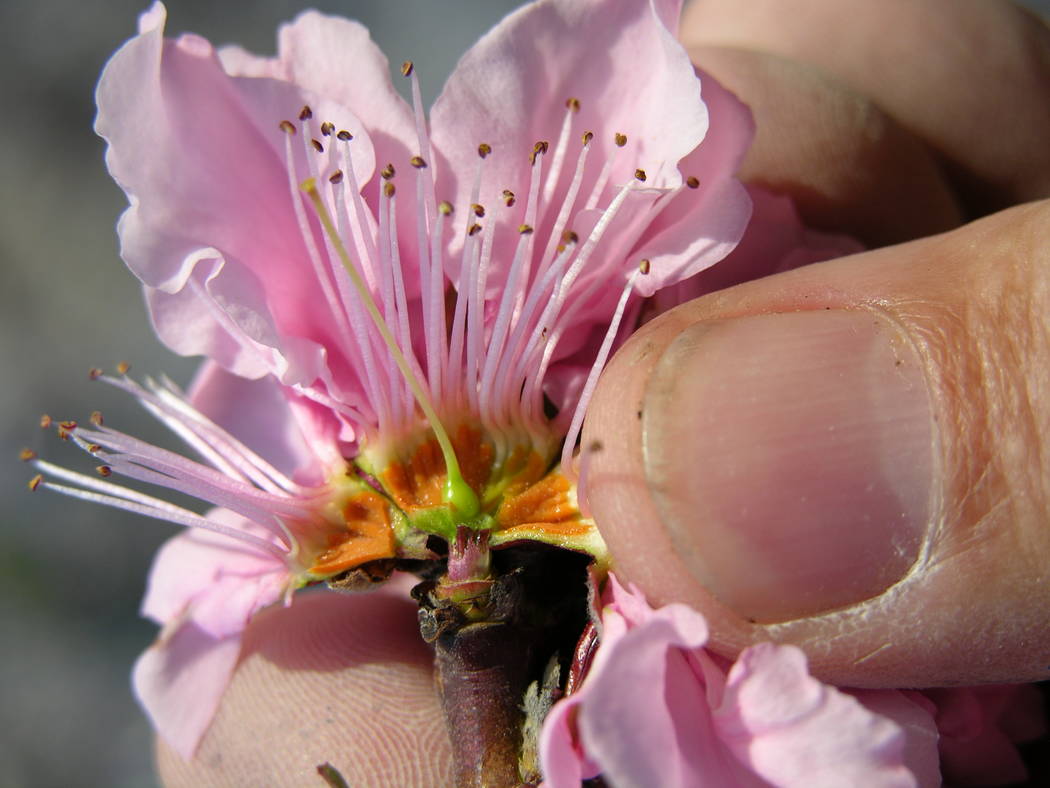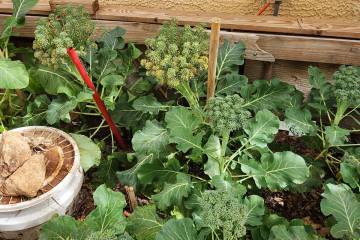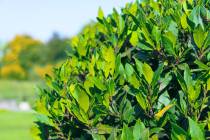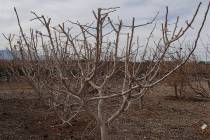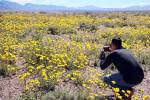Mexican petunia needs to be contained to area
Q: We have Mexican petunias, and all have suffered frost damage. How far should we prune them back?
A: Contain Mexican petunia in a localized area, so it doesn’t spread. Cut it back close to the ground, about 2 inches tall. For every single cut, three new shoots will grow. That improves its density.
Cutting off flowers that have finished blooming will reduce the spread of seed to new areas. Thoroughly clean afterward any equipment you might use, so you don’t spread it to a new location.
My experience with Mexican petunia has not been a great one. It grows like a weed, and I consider it the broadleaf version of Bermuda grass, aka devil grass. If it’s contained in an area and prevented from spreading into the landscape, I think it will be OK. Problems arise when it is planted in a shrub or flower bed.
Most of what’s available at nurseries will grow 3 or more feet tall. They can be cut back any time of the year, and they will regrow. There are supposed to be some varieties available that grow only about a foot tall. I don’t know if they are available here. Mexican petunia will spread into areas by seed or by underground stems called rhizomes. Some people will mistakenly call the plants rhizomes “roots,” but they’re not.
Use compost as a fertilizer application because mineral fertilizers, unless they are slow-release, will cause Mexican petunia to grow excessively. These plants like improved soil, and an application of compost helps with that. There might be fewer flowers produced if you overapply a fertilizer.
You can tell if the plants have plenty of nutrients by the color of the leaves. They will be dark green.
As a sidebar to this discussion, the reason they thin out and get scraggly is because they are not pruned and fertilized regularly. Cut them back and apply a fertilizer and see what happens after they are watered.
Q: I moved into a new home with exterior plants I am unfamiliar with. Because my cat has access to the enclosed backyard, I was wondering how I could determine whether any of these plants could be toxic to him.
A: One way or another, probably about 60 to 70 percent of all landscape plants are poisonous. Some are more poisonous than others. For instance, the toxicity of oleander, African sumac and cycad (sago palm) stems, leaves, flowers and seed has been well-documented. The berries produced by nandina (heavenly bamboo) have been reported to kill wild birds that eat them. Mushrooms that pop up from the ground after a rain generally cause animals to vomit but do not kill them. Don’t forget interior plants because a lot of those are poisonous as well.
The website by the American Society for Prevention of Cruelty to Animals has many poisonous and nonpoisonous landscape plants listed.
Q: My peach tree was in full bloom when that freeze hit in early February. This is the second time in three years that I had my peach crop wiped out by freezing temperatures. I’m thinking seriously about replacing it. What varieties bloom a little later than the first week in February?
A: As a general rule of thumb, the early-producing peaches also are the first to bloom. Later-producing peaches, like in July, August and even September, typically flower later.
Early-producing varieties like Earlitreat, Flordaprince, Flordaking and May Pride deliver peaches in early to mid-June in our valley. They flower consistently starting the first week of February. Even the early apples like Anna and Dorsett Golden push flowers around the third week of February here.
The location of a fruit tree in a landscape can encourage or discourage its flowering. For instance, locating a fruit tree in a warm microclimate of the yard causes it to flower early. Locating the same peach tree in a colder part of the yard might delay its flowering as much as two or three weeks.
To wipe out a crop, it usually requires repeat freezing temperatures while it is in flower. The flowering period can last two to three weeks depending on temperatures. February 2019 was a good example. Three different freeze events came through the valley a week to 10 days apart.
Many of the popular fruit and nut trees such as peach, apricot, plum, pluot and almond produce flowers first and then push leaf growth shortly after that or around the same time. Fruit trees like pomegranate, jujube, quince and persimmon flower much later and seldom get bothered by late spring freezing temperatures.
We forget that there is still a 5 percent chance of frost occurring after March 15 here.
If the tree has been growing less than three years, it’s possible to move it to a cooler location in the landscape. The time to do that is now or when temperatures start to cool down in the fall toward the end of September.
If you move the tree, remember to cut the major limbs back considerably before moving it. That helps compensate for the loss of roots that occur during the move.
Q: I have a dwarf peach tree that was about a foot tall when I planted it last year. It has grown about 6 inches more now. When can I prune it so it doesn’t grow taller than me? I am 4 feet 10 only and I don’t want it to grow very tall because it will be very hard for me to cover it with a net in future years. I want it to stay small.
A: By calling it a dwarf peach tree you mean it’s a genetic dwarf, not a semi-dwarf. It might be better to call a dwarf peach tree a miniature fruit tree instead. That is why it grew only about 6 inches last year.
The first year of pruning is aimed at training the tree’s future form and not aimed at fruit production. You want limbs to come from the trunk as low as possible without the fruit touching the ground.
Remove limbs from the trunk that are lower than about 12 inches from the soil. Remove a branch that is crossing another branch or rubbing against it. Branches should be about 10 to 12 inches apart all through the tree canopy.
In miniature peach trees, the ends of the branches often times grow into a crows foot of four or five small shoots. These are the places where flowers and fruit will be produced. Reduce the crows foot so that only one or two remain and remove the others. When the fruit is about the size of a quarter, you might have to remove other fruit so that the remaining fruit grows to a normal size.
Q: We recently purchased a house and I would like to begin identifying the specific plants, shrubs and trees on our property. Can you recommend a publication that would help me to do that?
A: Wait until these plants produce leaves and hopefully flowers. The easiest way is to identify with a combination of leaves, stems and flowers.
Take several pictures of these plants, including leaves and flowers, to a local nursery or make a visit to the master gardeners help desk just south of McCarran International Airport. You can call the help desk at 702-257-5555 and make an appointment.
There are several online websites and publications, but many do not have pictures, so it is sometimes hard to confirm. Two places that I would consult online is the Southern Nevada Water Authority searchable plant database and the Arizona Municipal Water Users Association list of landscape desert plants.
Once you have a name for a plant, confirm it on a search engine by looking at images for these plants online. It is more helpful if you have the scientific or Latin names for these plants rather than just the common names.
Plants that originate from desert regions usually require less soil amendment at the time of planting. They are usually more tolerant of rock applied to the surface of the soil, aka rock mulch. Plants that originate from wetter regions usually perform better in the long run with wood chips applied to the soil surface rather than rock.
Bob Morris is a horticulture expert and professor emeritus of the University of Nevada, Las Vegas. Visit his blog at xtremehorticulture.blogspot.com. Send questions to Extremehort@aol.com.



